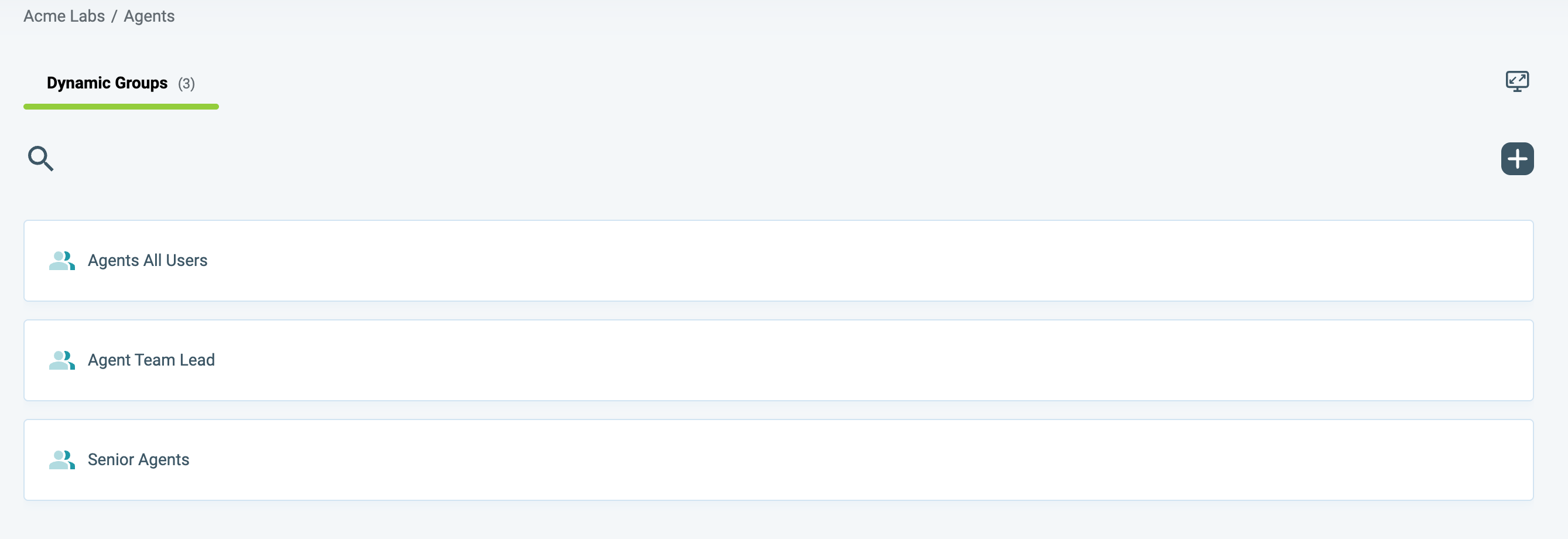The Identity Workspace is where you manage all your Identities (Dynamic Groups), manage Permissions, and more. Because many organizations maintain multiple types of Identity definitions (for example: internal users, external users, service accounts, etc.), the information for each type of user may come from different Identity Sources.
Each Workspace can support multiple Identity Sources (Main, AUX, and Context) but only one Main Source. Creating multiple Workspaces lets you access and use Identity data from multiple Main Sources. Multiple Identity Workspaces enable greater flexibility when building Policies because this lets connect Dynamic Groups, managed by different teams, all within the same Environment.
By default, one Identity Workspace is created automatically when a new Environment is added to a Tenant. Additional Identity Workspaces can be created by Environment Admins (see Managing Workspaces).
When you click on the Identity Workspace, a list of currently defined Dynamic Groups for that Workspace is displayed.

Dynamic Groups can be created directly in the Identity Workspace or while creating a Policy in the Policy Wizard. See Managing Dynamic Groups.
Information Sources
The Platform supports flexible data modeling that enables the use of External Data and Identity Sources with minimal customization. The Platform supports all relevant leading protocols (for example, Microsoft Active Directory, SQL, SCIM, JWT, etc.).
Once you have defined an External Data Source, you need to map Attributes created within the Platform to the External Source. Based on these mappings, the Identity Template is created at runtime.
Some of our Authorizers are currently supported with a default "User" Identity Workspace only. For additional information, reach out to our Support Team.